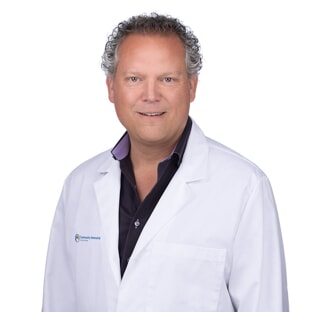Tips for Preventing & Treating Back Pain
- Category: Health Tips, Spine Surgery, Robotic-assisted Surgery, Joint Program
- Posted On:
- Written By: Justin Millard, MD
The spine is the body’s core. When your back hurts, it can not only affect other parts of your body, but also have a significant impact on your daily activities and overall quality of life. A 2019 study published by the Centers for Disease Control reported that a shocking 39% of adults experienced back pain, making it the most prevalent site for pain in the study.
If you’re experiencing ongoing back pain, you are not alone. The most cited reason people visit their primary care physician is for the common cold, but the second most frequent reason is for low back pain. Generally, low back pain is caused by a strain or sprain at the junctions between the muscles and the bones in the back. The good news is that for most people, this problem resolves in 6 - 9 weeks without surgery.
But there can be other, more serious problems. Disc herniation in the lumbar spine can cause back or leg pain, and cervical disc herniation can cause neck pain or arm pain. Arthritis of the spine is another condition that can cause low back pain and/or leg pain that increases the longer you stand or walk and persists well beyond the 9-week mark.
 Dr. Justin Millard is an Orthopedic Spine Surgeon at Community Memorial Healthcare. You can schedule an appointment with Dr. Millard at our Community Memorial Health Center locations in Camarillo and Ventura. Click here to visit Dr. Millard’s physician profile and learn more about his education, experience, and philosophy of care.
Dr. Justin Millard is an Orthopedic Spine Surgeon at Community Memorial Healthcare. You can schedule an appointment with Dr. Millard at our Community Memorial Health Center locations in Camarillo and Ventura. Click here to visit Dr. Millard’s physician profile and learn more about his education, experience, and philosophy of care.
Preventing Back Injuries
Preventing injuries to the spine and muscles of the back are key to avoiding back pain. It’s also important to keep your weight in check and get regular exercise. Hitting the benchmark of 7,000 steps a day goes a long way toward preventing long-term degenerative problems in your neck, low back, hips, and knees. Keeping your core strong is another strategy that can help prevent injury and pain in the back. Strengthening the muscles that support the spine, neck, and pelvis helps reduce the likelihood of injury during everyday activities.
If you need accountability or guidance in your quest to exercise more and strengthen your core, join a gym with a friend, take instructor-led Pilates or yoga classes, or hire a personal trainer. Learn specific exercises that strengthen the back and target your core muscles. Low-impact activities that do not strain your back – walking, cycling and spinning, or swimming – are great options for cardiovascular health!
Posture is another crucial element of total back health. Don’t slouch when sitting or standing, and stretch on a daily basis to loosen muscles and promote spinal health. If you sit for long periods of time at work, get up and walk around every so often. When lifting heavy objects, engage the muscles in your legs and glutes, bend at the knees, and keep your back straight. If something is too heavy for you to comfortably lift with good body mechanics, ask for help.
Diagnosing Back Problems
My philosophy is that communication between a physician and their patient is critical in achieving the right diagnosis. For example, I have a patient who came in complaining of difficulty walking and low back pain. Through conversation with the patient, it became clear that she was also having difficulty with fine motor coordination – buttoning buttons, opening jars, and dropping objects. After a thorough physical exam and review of her spinal images, I could see she had compression of the spinal cord in her neck. Because her initial complaints were about loss of balance and low back pain, I may have missed this important information had I not talked her through her neck issues.
Minimally Invasive Surgery
For some back issues,minimally invasive spinal surgery is the best treatment to help preserve motion. Medical technology has advanced significantly in this area, and spinal fusion is no longer the only option for significant problems in the spine. Today we have minimally invasive surgical options that require smaller incisions, quicker surgery times, and faster recoveries.
When it comes to preserving motion in the spine, we now have 20-year data on cervical artificial disc replacement and good 15-year data on lumbar artificial disc replacement. Similar to knee and hip replacements, surgeons can now insert a metallic joint into the cervical spine or lumbar spine allowing near natural movement at these levels. These artificial disks have been game changing for spinal care and movement preservation.
Ultimately, I think the “holy grail” for any joint in the body, including the spine, is biological regeneration. This might include the use of stem cells or other technologies that encourage the body to rebuild its own native structure, as opposed to inserting metal into the body or fusing discs to solve problems. We aren’t there yet, but I am excited to seeing what the future holds and committed to bringing the latest technology and treatment modalities to my patients at Community Memorial!
